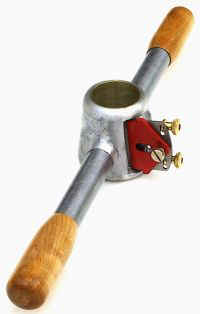disco_monkey79
Established Member
- Joined
- 5 Oct 2009
- Messages
- 681
- Reaction score
- 48
Hi
Having read Jack Hill's Country Chair Making, I'm keen to have a go at some of the simpler projects.
Jack referenced using a rounding plane to get the end of the leg precisely cut, to ensure a very snug fit in the seat (I'm talking about for windsor-style, with round legs).
I don;t want to (i.e. can;t afford to!) by umpteen rounding planes, so was wondering if 1" would be a sensible size to go for.
Also, I note Jack's book was written some 25 years ago - are there any alternatives to a rounding plane now available? I've seen Veritas shavers, like giant pencil sharpeners, but these don;t seem to go as big as 1".
Many thanks
Having read Jack Hill's Country Chair Making, I'm keen to have a go at some of the simpler projects.
Jack referenced using a rounding plane to get the end of the leg precisely cut, to ensure a very snug fit in the seat (I'm talking about for windsor-style, with round legs).
I don;t want to (i.e. can;t afford to!) by umpteen rounding planes, so was wondering if 1" would be a sensible size to go for.
Also, I note Jack's book was written some 25 years ago - are there any alternatives to a rounding plane now available? I've seen Veritas shavers, like giant pencil sharpeners, but these don;t seem to go as big as 1".
Many thanks



































